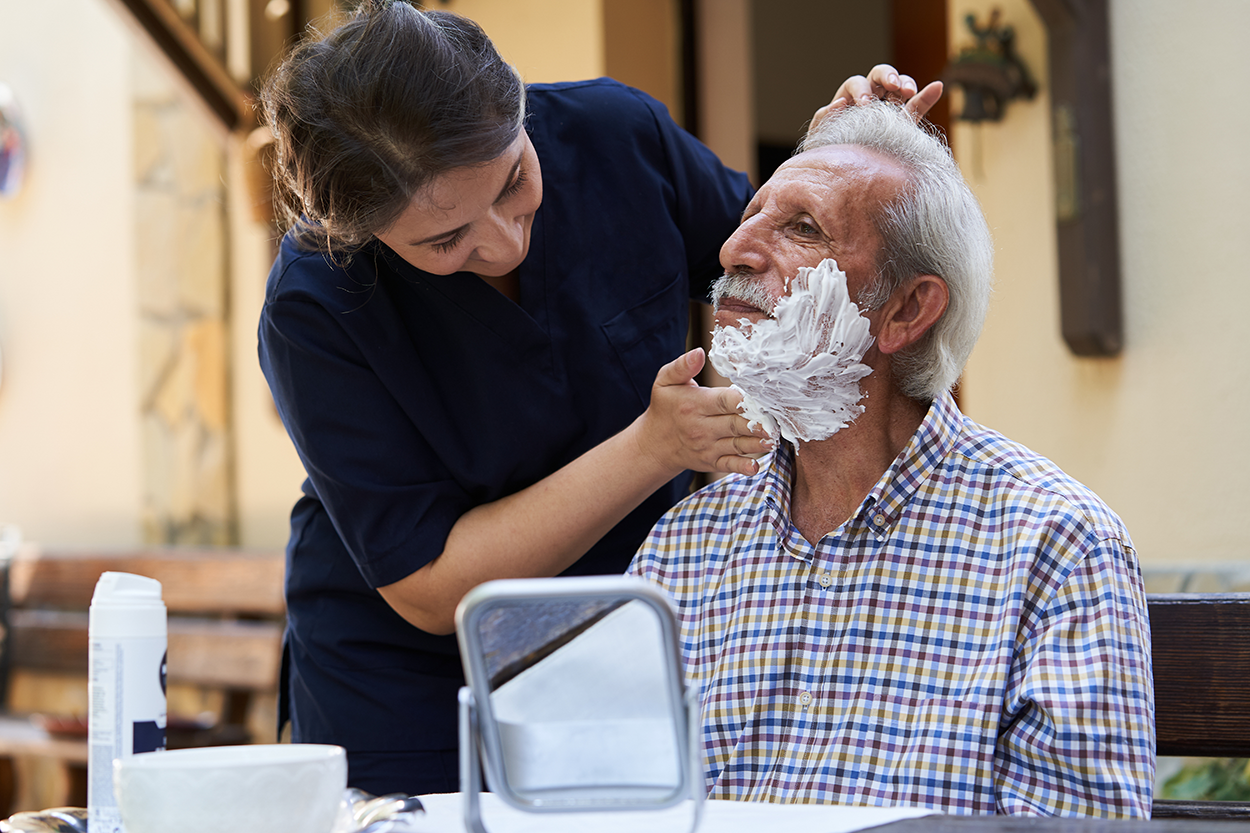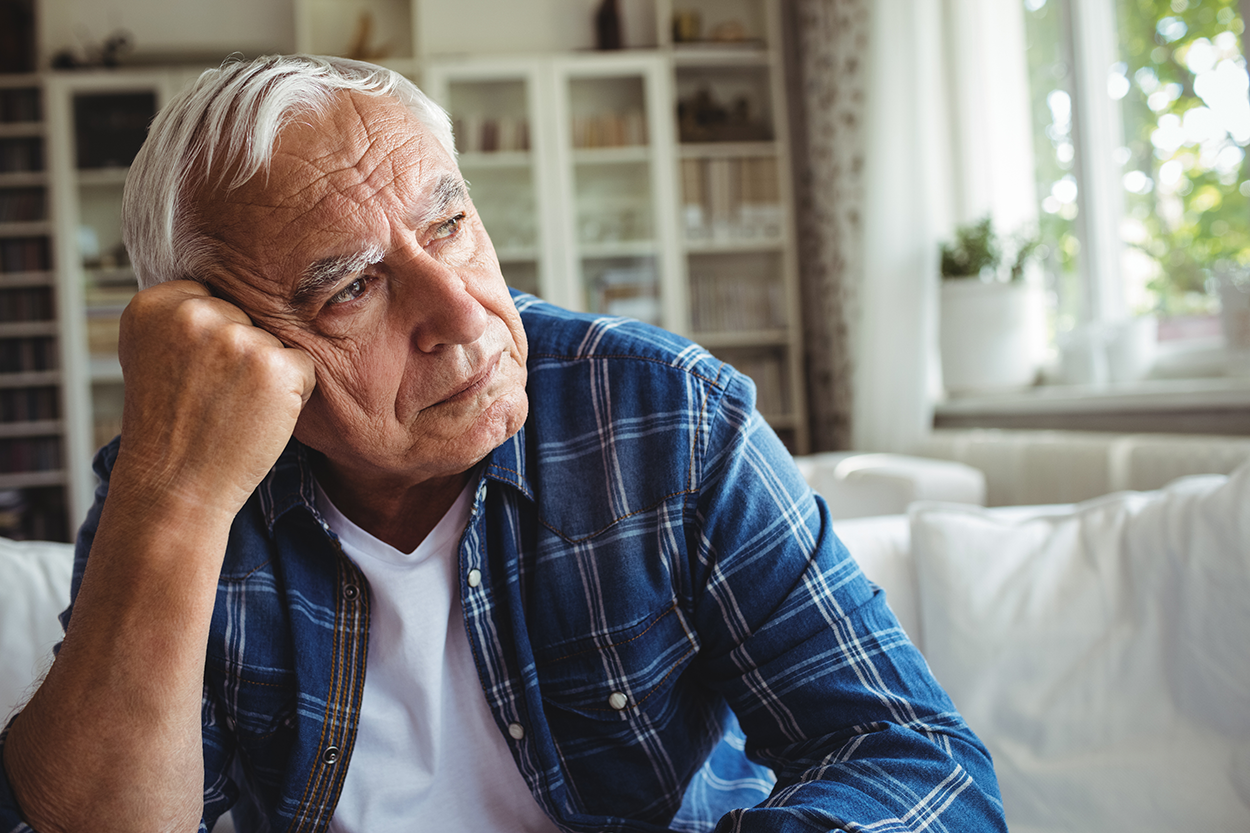Table of Contents |
Caregiving is a critical public health issue affecting millions of individuals. Caregivers, whether for the aging population or a younger, nonelderly, dependent, help with the daily living activities of the sick and the aging, such as bathing, dressing, paying bills, and transportation. The life of a family member caregiver requires immense dedication, patience, and sacrifice. Family members who care for an elderly parent or a family member are on a complex and multifaceted journey. It involves joy, deep connection, and fulfillment, but it also comes with many challenges. This section will focus on caregiving, specifically for the aging, but note that caregiving for a younger or nonelderly dependent requires the same dedication, compassion, and flexibility to understand the dependent’s specific health care needs.

Caregiving for the aging is nuanced as it relates to addressing issues related to aging, such as cognitive decline or chronic health issues specific to aging. Managing chronic conditions and addressing the brain health of their dependents is essential to caregivers and mitigates the effects of an aging population. Caring for the general population also requires knowing specifics about a dependent’s health needs. Caregivers can be unpaid family members, friends, or paid caregivers. Informal or unpaid caregivers are the backbone of long-term care provided in people’s homes (Centers for Disease Control and Prevention [CDC], 2023).
A caregiver’s morning routine might begin with assisting the elderly or younger dependent with daily activities like getting out of bed, bathing, dressing, and preparing breakfast. This routine sets the tone for the day and emphasizes the caregiver’s role in ensuring the dependent’s well-being.
A significant portion of time is often dedicated to managing health care needs. This includes scheduling and attending medical appointments, coordinating with health care professionals, and tracking and administering medications. When caring for an aging person, these appointments may include health care providers who specialize in issues specific to aging. Caregivers also provide companionship, engaging in conversations and activities. Balancing the emotional needs of the elderly or nonelderly dependent with self-care can be emotionally taxing.

Caregivers may manage household affairs like shopping for groceries, preparing meals, and maintaining a safe living environment. This juggling of responsibilities can be overwhelming, particularly if one is caring for a family member. In this case, caregiving can involve putting personal needs on hold as well as financial strain if one is helping to pay for medical bills and/or life expenses, and it can take an emotional toll. Recognition of this aspect and self-care and support are essential for caregivers. Caregiving can be both rewarding and demanding. Fifty-eight percent of caregivers are women, one third of caregivers provide at least 20 hr per week of care, and many caregivers learn as they go and are not formally trained. Further, 79% of caregivers care for adults aged 50 or above, and 76% of care recipients are 65 years or older (CDC, 2021).
Practical assistance includes helping caregivers with errands, chores, and tasks related to caregiving. Providing emotional and social support to alleviate caregiver stress is also crucial. Advocating for caregivers to seek mental health services if necessary is imperative. The National Family Caregiver Support Program (NFCSP) of the Administration for Community Living (ACL) is another program to support families and their caregivers. The program provides grants to states and territories to fund support for families who are caring for older adults so they can stay in their homes for as long as possible.
Additionally, the National Strategy to Support Family Caregivers outlines comprehensive actions at the federal, state, and private-sector levels to enhance caregiver support (U.S. Department of Health and Human Services [HHS], 2022).
The U.S. Department of Veterans Affairs (VA) provides a program designed to support caregivers of veterans: the VA Caregiver Support Program. This program includes the Program of General Caregiver Support Services (PGCSS), which offers a range of resources to help caregivers in their important role. These resources include peer support mentoring, skills training, telephone support, and online programs tailored to assist those caring for veterans.

In 2021, the ACL presented its initial report on the Supporting Grandparents Raising Grandchildren Act to the U.S. Congress. In this case, the aging grandparents who have their own challenges, as discussed, care for their grandchildren. This report has recommendations for improving support to kin and grandparent caregivers. There are 22 recommendations in this report that fall into five categories. These are awareness of or outreach to kin and grandparent caregivers, engagement with kin and grandparent caregivers, services and support for kinship families and grandfamilies, financial and workplace security, research, data, and evidence-based practices. Federally funded efforts to support kinship families and grandfamilies are also highlighted (ACL, 2021). Many older adults would not be able to remain in their communities without this support. Replacing this care with paid support would cost an estimated $470 billion each year (HHS, 2022).
Also, in 2021, the ACL delivered to the U.S. Congress its initial report on the outcomes of passing the Recognize, Assist, Support, and Engage (RAISE) Act. This report includes a comprehensive review of the state of family caregiving and 26 recommendations for how the federal government, states, tribes, territories, and communities—in partnership with the private sector—can better recognize caregivers.
Caregiver self-care is the intentional practice of taking care of oneself while providing care for others. Whether a professional caregiver or a caregiver for a loved one, prioritizing well-being is crucial. Caregiving can be physically and mentally exhausting. Over time, caregiver stress can lead to burnout. Burnout is a condition marked by irritability, fatigue, problems with sleep, feelings of helplessness, weight gain, and social isolation (LeWine, 2024).
Beyond burnout, there can be compassion fatigue. Compassion fatigue is a condition that affects caregivers who are deeply empathetic and continuously exposed to the suffering of those they care for. It is often described as the “cost of caring” and can lead to significant emotional and physical stress. Compassion fatigue is characterized by emotional exhaustion, chronic fatigue, headaches and more physical symptoms, emotional outbursts, and isolation (Auteri, n.d.).

Emotional well-being is also an important component of self-care. Neglecting emotional needs can lead to burnout, stress, and even depression. By practicing self-care, you enhance your emotional resilience. Emotional resilience is an art of living that intertwines self-belief, self-compassion, and enhanced cognition. It empowers us to perceive adversities as temporary, allowing us to evolve through pain and suffering (Chowdhury, 2019).

When caregivers are healthy, rested, and emotionally balanced, they provide better care. Self-care positively impacts the quality of care offered to loved ones. LeWine (2024) offers these five strategies for self-care.
IN CONTEXT
Caregivers Need Self-Care
When Greg was 65 years old, he discovered he was suffering from end-stage renal disease (kidney failure). He quickly became quite ill and had to move in with his granddaughter to receive the care he needed. To save his life, he had to begin hemodialysis three times a week. This is very hard on the body and the mind. His granddaughter, Kate, became his caregiver. Kate had three children, a husband, and a career. Kate and Greg partnered in his care as much as possible. When Greg was very sick or simply not feeling well and could not do as much to partner, Kate had to care for him at his home, leaving her own family behind. When he was in the hospital, she had to make time to visit and ensure he had all he needed. When he came home or was too weak, she had to take him to dialysis, help him shop for groceries, and attend medical appointments. For years, she had to visit him in the emergency room to wait for hours, and sometimes it was the middle of the night. Over the years, Greg also developed signs of aging with a chronic condition and heart failure. While caregiving, Kate had a strong bond with Greg, and they spent many years together sharing tears and laughter during the times when Greg felt well.
To cope throughout the years, Kate exercised regularly, enjoyed strong social support from friends, and learned to tell Greg when she needed a break. They both understood the commitment it took and the toll it could take to care for him. When Greg died at the age of 80 (nearly 15 years after his illness began), Kate understood that her self-care along the way, including building emotional resilience, was what helped her to cope for so long.
Setting boundaries is crucial for managing caregiver stress. Boundaries allow caregivers to care for both themselves and others simultaneously. Attending to your own health needs through getting enough rest, eating well, and staying hydrated is important. Connecting with others who understand the situation can provide comfort and reassurance. Finally, occasionally stepping away from caregiving responsibilities and asking others to provide respite is essential for recharging and preventing burnout.
Source: THIS TUTORIAL WAS AUTHORED BY SOPHIA LEARNING. PLEASE SEE OUR TERMS OF USE.
Disclaimer: The use of any CDC and United States government materials, including any links to the materials on the CDC or government websites, does not imply endorsement by the CDC or the United States government of us, our company, product, facility, service, or enterprise.
REFERENCES
Administration for Community Living. (2021, November 16). Advisory Council to Support Grandparents Raising Grandchildren delivers report and recommendations for improving support to kin and grandparent caregivers. acl.gov/news-and-events/announcements/advisory-council-support-grandparents-raising-grandchildren-delivers
Auteri, S. (n.d.). January senior sense: What is compassion fatigue, and how do I cope? Harvard Human Resources. hr.harvard.edu/files/humanresources/files/january_2022_senior_sense.pdf?m=1641220634
Centers for Disease Control and Prevention. (2021, November 22). Supporting caregivers: An emerging public health issue. U.S. Department of Health and Human Services. www.cdc.gov/aging/publications/features/supporting-caregivers.htm
Centers for Disease Control and Prevention. (2023, June 29). For caregivers, family and friends. U.S. Department of Health and Human Services. www.cdc.gov/aging/caregiving/
Chowdhury, M. R. (2019, January 22). What is emotional resilience? (+6 proven ways to build it). Positive Psychology. positivepsychology.com/emotional-resilience/
LeWine, H. (2024, January 24). Self-care for the caregiver. Harvard Health Publishing. www.health.harvard.edu/blog/self-care-for-the-caregiver-2018101715003
U.S. Department of Health and Human Services. (2022, September 21). HHS delivers first national strategy to support family caregivers. www.hhs.gov/about/news/2022/09/21/hhs-delivers-first-national-strategy-support-family-caregivers.html